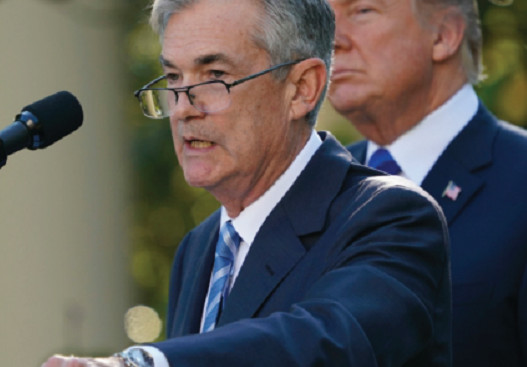




 |
 |
 |
|||
 |
 |
 |
 |
 | |
 |
 |
 | |


| 미디어 브리핑스 | 내서재담기 |


  |
 |  |
필립스 곡선(혹은 필립스 커브)에 따르면 ‘실업률이 낮을 때, 인플레이션이 높고, 그 반대도 마찬가지’다. 연방준비이사회는 여전히 이 사고를 기반으로 정책을 결정한다. 그러나 실업률과 인플레이션의 상관관계에 대해 경험적 증거는 무엇을 말하고 있는가? 이 경험적 증거들이 의미하는 바는 무엇일까? 통화 정책과 그 결과로 파생되는 인플레이션 부문에 어떤 일이 일어날 것인가?
1958년, 경제학자 A. W. 필립스A.W. Phillips는 영국에서 100년 동안 임금과 실업간 반비례 관계가 있음을 발견했다. 1960년, 미국의 경제학자 사무엘슨Samuelson과 솔로우Solow는 필립스의 이 아이디어를 취하여 인플레이션과 실업간 연관성을 구체화시켰다. 즉, “실업률이 낮을 때 인플레이션이 높다. 혹은 그 반대의 경우도 성립한다.”
이 아이디어가 바로 필립스 곡선Phillips Curve이다. 이 곡선은 한 축을 실업률로 다른 한 축을 인플레이션으로 역사적 자료를 그래프로 표기할 때, 낮은 실업률과 높은 인플레이션 사이에 밀접한 관련이 있다는 점을 보여준다. 직관적으로 이것은 이치에 맞다. 경제 성장이 일어나고 실직자가 거의 없는 안정된 세계에서, 임금은 급격히 상승한다. 고용주들이 부족한 노동력에 대한 가치를 높게 매기기 때문이다. 이것은 연방준비은행(이하 연준)이 수십 년간 금리를 책정하는 데 사용하는 근본적인 경제 이론이었다.
그러나 필라델피아 연준 소속의 경제학자가 수행한 새로운 연구에 따르면, 필립스 곡선은 유효하지 않다! 지난 30년 동안 금리를 정하기 위한 연준의 전략 핵심이 근거하는 기본 원칙이 실제로는 상당히 문제가 있는 지침이었다는 것이다.
필라델피아 연준의 연구 책임자 마이클 도트세이Michael Dotsey는 공동 저술 논문에서 필립스 곡선을 기반으로 한 예측 모델이 인플레이션을 예측하는 데 전혀 도움이 되지 않는다는 것을 보여줬다. 도트세이와 같은 연준 소속 경제학자 시게루 후지타Shigeru Fujita, 톰 스타크Tom Stark는 “우리 연구 결과는 통화 정책결정자들이 인플레이션 압력을 측정할 때 필립스 곡선에 의존하지만, 이제 매우 신중해야한다.”고 밝혔다. 이들의 연구는 시의 적절한 것처럼 보인다. 실업률이 지속적으로 하락했음에도 불구하고 지난 수 개월 동안 미국의 인플레이션은 둔화됐기 때문이다. 필립스 커브에 따르면 실업률 하락은 인플레이션 상승과 관계가 있어야 한다.
필라델피아 연준의 경제학자들은 실업률 상승이 때로는 인플레이션을 낮추는 데 도움이 될 수 있지만 실업률 하락이 인플레이션 상승을 예측하는 데는 도움이 되지 않는다는 사실을 발견한 것이다.
이들은 특히 1970년대 전체와 1980년대 초반에 이러한 현상이 나타났는데, 연준이 높은 인플레이션 상승으로 미국 경제가 침체되지 않도록 대응한 시기였다고 언급했다. 이들은 “우리의 증거는 필립스 곡선을 사용하면 경기 침체기에 통화 정책 과정에 가치를 더할 수도 있지만, 어떤 확실성과는 거리가 멀다는 것입니다. 현재 미국 경제가 직면하고 있는 것과 같은 일반적 시기에 필립스 곡선에 의존하는 증거는 찾을 수가 없었습니다.”라고 기술했다.
사실 이 보고서는 그렇게 놀라운 것이 아니다. 그럼에도 연방공개시장위원회Federal Open Market Committee, FOMC는 이러한 연구, 즉 경험적 부합 요소가 명확히 부족함에도 불고하고, 기존 모델을 사용하고 있다.
왜 그러할까? 사무엘슨과 슬로우가 필립스 곡선에 대한 아이디어를 대중화한지 불과 수 년 후인 1970년대 실업률과 인플레이션의 관계는 그들이 말하는 대로 더 이상 작동하지 않게 되었다. 이 시기에 경제는 높은 인플레이션과 실업률을 특징으로 하는 ‘스태그플레이션stagflation’으로 고통 받았다. 1977년 11월, 미 의회는 경제 정상화의 일환으로 연준법Federal Reserve Act을 개정하여 연준에게 ‘이중 권한’을 부여했다. 이로 인해 연준은 물가 안정에 대한 책임뿐만 아니라, 최대한의 고용을 촉진하는 정책을 취해야 했다. 물가와 고용을 모두 아우르는 이러한 이중 권한을 고려할 때, 오늘날의 연준이 왜 여전히 단순한 필립스 곡선 아이디어에 집착하는지를 이해할 수 있다.
필립스 곡선은 이 두 문제를 밀접하게 관련시킨 유일한 문서화된 프레임워크이기 때문이다.
결과적으로 재닛 옐런Janet Yellen 연방준비제도이사회 의장은 여전히 필립스 곡선이 ‘살아있고 유효하다’는 것처럼 행동하고 있다. 이러한 이유로, 연준은 16년 만에 가장 낮은 수준인 U3 실업률(약 4.3퍼센트)이 2018년의 어느 때 인플레이션을 촉발하여, 연준 목표인 최소 2퍼센트까지 압박할 것이라고 가정하고 있다. 그리고 추가적인 금리 인상이 없으면, 더 높은 인플레이션이 일어날 것이라고 말한다.
따라서 연준의 행동과 경제에 미치는 그들의 영향 간에는 오랜 시간 지체했기 때문에, 연방공개시장위원회 위원들은 지금 통화 정책을 강화함으로써 인플레이션이 2퍼센트를 넘는 위험을 선조치하는 것이 올바른 결정이라고 주장한다. 그러나 이와 연계된 문제는 실업률을 제외한 모든 주요 경제 지표가 인플레이션이 언제오든 문제가 되지 않는다는 것을 보여주고 있다는 점이다.
그렇다면 왜 필립스 곡선은 이제 70년대 이전과 같은 방식으로 작동하지 않는가? 여기에는 적어도 5가지 이유가 있다.
1. 오늘날의 U3 실업률은 1990년대 이전의 실업률과 동일하지 않다. 대부분의 경제학자들은 1990년대에 발생했던 ‘공식 BLS 고용 데이터의 명확한 변화’를 무시하고 있다. 이는 무책임한 행동이다. 이들은 더 이전의 기간 데이터가 오늘날의 U3와 비교 가능한 것처럼 행동한다. 실제로, 60년대, 70년대, 80년대에 사용된 ‘실업의 옛날 방식의 정의’는 실업에 대한 U6의 정의와 가장 유사하다. U6는 풀타임 직업을 찾을 수 없어 파트타임 근무를 하는 사람들, 풀타임 직업이라고 하기에는 미비한 직업의 사람들까지 포함해 계산하는 것이다. 이러한 관점에서 보면, 오늘날의 8.6퍼센트의 U6 실업률은 인플레이션이 별 것 아니며, 필립스 곡선 관계를 사용하여 곧 통제될 것이라는 기대를 이끌어 내지 못할 것이다.
2. 지난 수개월 동안 미국 경제 성장 엔진에는 다른 강점들에도 불구하고 균열이 나타났다. 느린 성장은 2017년 2/4분기에 연간 3.2퍼센트의 성장을 보였음에도 여전히 그대로다. 8년 평균 1.9퍼센트의 회복 이후 미지근한 성장 지표가 4.3퍼센트의 U3 실업률보다 더 높다고 가정하는 것이 현명하다. 따라서 필립스 곡선 유형 관계가 여전히 존재하더라도 우리는 의미심장한 인플레이션이 도래할 것으로 예상해서는 안 된다.
3. 지난 50년 동안 미국은 고임금 일자리가 있는 제조업 기반을 많이 잃었고, 저임금 일자리에 더 많은 사람들이 몰리는 서비스 지향 경제가 되었다. 또한 U3는 정규직과 동일한 비중으로 파트타임 직업을 계상한다. 이 두 가지 요인 모두 낮은 실업률에도 불구하고 저조한 임금 상승률을 견인하는 주요 역할을 하고 있다. 경제학자 데이비드 로젠버그David Rosenberg는 저임금 일자리가 대불황 이전보다 전체 일자리 중 높은 비율을 차지하고 있고 고임금 일자리가 전혀 성장하지 않았음을 연구했다. 이러한 요소들은 필립스 곡선이 공식화되었을 때보다 경제 소비에 대한 고용의 영향이 미약해졌다는 것을 의미한다.
4. 지난 30년 동안 세계화로 인해 미국과 전 세계에서 경제적 상황이 모두 재정립되었다. 제조 및 서비스업 노동 시장 모두 더 이상 해당 소지역에만 국한되는 것이 아니라, 적어도 국가적이거나 심지어 세계적인 산업에 의존하게 되었다. 이로 인해 수많은 분야에서 전 세계적으로 과도한 산업 역량이 발생했다. 세계화의 강력한 디플레이션 요소는 연준이나 기타 어떤 세력에 의해서도 통제될 수 없다. 필립스 곡선은 전 세계 실업 또는 인플레이션을 측정하려는 시도조차 하지 않고 있다.
5. 디지털 혁명이 인플레이션 측정을 더욱 어렵게 만들고 있다. 모든 산업에서 창출된 가치가 이전보다 더 크게ever-greater 공유된다. 이것은 비금전적 고객 잉여customer surplus의 형태에 존재하기 때문이다. 즉, 스마트폰 앱, 데이터베이스, 통신 네트워크, 엔터테인먼트를 포함하여 우리가 소비하는 모든 무료 제품 및 서비스는 경제적 계산 요소에 나타나지 않는다. 실제로 우리는 20년 이상의 가상virtual 디플레이션을 경험해오고 있다. 훨씬 더 많은 가치를 가격이 거의 오르지 않는 서비스 번들 형태로 얻기 때문이다. 이러한 트렌드는 더욱 가속화되고 있을 뿐이다.
현재 인플레이션이 길어지는 동안 U3 실업률은 계속 떨어지고 있다. 구식 필립스 곡선의 가정은 세계화, 기술 혁신, 산업별 구조 조정, 측정받는 요소들의 재정의를 비롯한 여러 가지 이유로 더 이상 유효하게 작동하지 않고 있다. 그러나 연준은 여전히 필립스 곡선 로직을 사용하여 그들의 이중 권한을 계속 추진하고 있다.
이러한 트렌드와 변화되고 있는 현실을 기반으로 우리는 앞으로 다음 3가지를 예측한다.
첫째, 세계화가 느려지고 정치적 민족주의가 가속화되면서 디플레이션 압력이 줄어들고 인플레이션이 약간 더 높아질 것이다.
세계화는 역사적으로 그리고 특히 지난 30년 동안 강력한 디플레이션 요소였다. 그러나 그 힘이 이제 약화되고 있다. 이것은 세계 무역의 정체로 입증된다. 반대로 역사적으로 인플레이션 압력이 높은 정치적 민족주의가 부상하고 있다. 세계화의 둔화는 주로 구조적 요인에 기인할 수 있다. 예를 들어, 관세율은 20세기 후반에 꾸준히 하락하여 이 과정에서 세계 무역을 촉진하는 데 도움이 되었다. 그러나 이제는 대부분의 상품이 무관세로 국경을 넘을 것이므로 무역 자유화에 대한 추가 노력은 수익 감소의 대상이 될 것이다.
아웃소싱도 마찬가지다. 실제로 많은 기업들이 아웃소싱을 너무 많이 함으로써, 다루기 힘든 공급자 미로를 전 세계 곳곳에 남겼다. 앞으로 10년 안에 이것의 대부분이 족쇄를 풀고 세상에 등장할 것이다. 마찬가지로 동유럽과 중국의 자본주의 경제로의 통합은 10억 명의 추가 근로자를 세계 노동 인구로 끌어 들여 세계화의 엄청난 추진력이 되었다. 그러나 앞으로는 그 어떤 비슷한 일도 일어나지 않는다.
반면, 정치는 점차 세계화에 대한 역풍을 보여주고 있다. 부유한 국가간 무역은 가난한 국가간 무역보다 덜 혼란스러운 경향이 있다. 이머징 마켓이 글로벌 트레이딩 시스템에서 더 큰 플레이어가 되어감에 따라 선진국의 숙련되지 않은 노동자에게 더 큰 영향을 주고 있다. 그 결과는 민족주의적 반발로, 이는 이민 감소와 더 높아진 무역 장벽으로 이어질 것이고, 다시 임금과 인플레이션으로 이어질 것이다.
둘째, 제한된 세계화와 강화된 민족주의의 영향에도 불구하고, 인플레이션은 당분간 미국 경제에 심각한 문제가 되지는 않을 것이다.
오늘날 역사적으로 낮은 노동 참여율로 인해, U6가 5퍼센트 이하로 떨어지면 문제가 될 수 있지만 거의 ‘완전 고용’에 근접한 곳은 어디에도 없다. 베이비 붐 세대의 퇴직 속도는 매우 불확실하다. ‘미국 우선’이라는 아젠다에도 불구하고, 미국이 여전히 세계화된 경제에서 살고 있고, 인도와 아프리카는 고령화된 중국과 라틴 아메리카 계급을 장악하기 위해 대기 중이다. 그리고 가장 중요한 사실은 전 세계의 전례 없는 잉여 자본으로 인한 생산성 붐이 이제 시작하고 있다는 점이다.
정보기술 및 바이오기술 경제는 세계가 근원적으로 디플레이션 상태에 머무른다는 것을 의미한다. 이러한 배경 하에서 인플레이션을 2.5~3퍼센트로 지속적으로 관리하는 것은 도전 과제가 될 것이다. 그리고 4퍼센트 이상의 지속적인 실질 성장만이 연간 4퍼센트 혹은 그 이상의 인플레이션을 발생시킬 수 있다.
셋째, 정책적 이유로 연준과 다른 중앙은행들은 물가 상승률을 현재의 2퍼센트보다 그 이상 상승시킬 것이다.
70년대를 기억하는 사람들에게 이것은 비뚤어진 길이다. 그러나 우리가 일본에서 목도한 장기 불황을 고려할 때, 이 논리는 오히려 직선적이다. 인플레이션이 4퍼센트고 심한 경기 침체로 인해 중앙은행들이 일시적으로 실질 이자율을 마이너스 3퍼센트로 낮출 필요가 있는 경우, 이것은 명목율nominal rate을 1퍼센트로 줄임으로써 가능할 수 있다. 반대로 인플레이션이 2퍼센트라면, 명목율을 마이너스 1퍼센트로 낮추기 어려울 수 있다. 왜냐하면 사람들은 부정적인 유연한negative-yielding 자산보다는 현금을 확보하는 것을 선택할 것이기 때문이다. 또한 중앙은행들은 경기 대침체Great Recession를 통해 자산 거품 붕괴가 경제에 심각한 피해를 줄 수 있음을 학습했다.
여기에서 다시 한 번 약간의 상승 인플레이션이 일종의 안전밸브를 제공할 수 있다. 인플레이션율의 추세가 주택 파산으로 이어지도록 더 높게 상승했다면, 명목상 주택 가격은 실질 가격의 변화에 비해 덜 떨어질 것이다. 이것은 모기지가 줄어들 것이란 의미다. 기본 인플레이션율이 높아지면 대출 기관이 호황기의 제로이자 모기지를 제공하기가 더 어려워질 것이다. 실질적 자금 조달 비용이 증가하기 때문이다. 이것은 대출 제공자와 신청자 모두에게 더 많은 규제를 부과하는 방향으로 흐른다.
다음은 노동 시장이 있다. 명목 임금 삭감을 받아들이는 데 있어 노동자의 불만은 기본 인플레이션이 매우 낮을 때 역으로 경제 충격 국면에서 실질 임금 하향 조정을 어렵게 만든다. 인플레이션이 더 높으면 그 문제는 줄어든다. 우리는 오늘날 이 문제를 유럽 시장에서 목도하고 있다. 유럽의 노동시장은 유연하지 못하다. 다른 많은 국가들도 경기 순환 경향과 반대되는 재정 정책 혹은 화폐 가치 저하로 인한 역 쇼크에 대응할 능력을 갖추지 못하고 있다.
* *
References List :
1. Global Investment Strategy, July 28, 2017, Bank Credit Analyst, A New Bottom in Inflation.
2. Bloomberg Markets, August 24, 2017, Matthew Boesler, Phillips Curve Doesnt Help Forecast Inflation, Fed Study Finds.
https://www.bloomberg.com/news/articles/2017-08-24/phillips-curve-doesn-t-help-forecast-inflation-fed-study-finds
3. Working Paper No. 17-26, Federal Reserve Bank of Philadelphia, August, 2017, Michael Dotsey, Shiguru Fujita, & Tom Stark, DO PHILLIPS CURVES CONDITIONALLY HELP TO FORECAST INFLATION?.
https://www.philadelphiafed.org/-/media/research-and-data/publications/working-papers/2017/wp17-26.pdf
4. First Trust Portfolios, September 25, 2017, Brian S. Wesbury& Robert Stein, Low Inflation is No Mystery.
http://carlsonwm.com/low-inflation-no-mystery/
5. Forbes, September 6, 2017, Robert Barone, Fed And Phillips Curve Point To Lingering Deflation And Low Interest Rates.
https://www.forbes.com/sites/greatspeculations/2017/09/06/fed-and-phillips-curve-point-to-lingering-deflation-and-low-interest-rates/#51fc2ebe2c9c
6. MISH TALK, August 10, 2017, Mish Shedlock, Oh that “Elusive Inflation!
https://www.themaven.net/mishtalk/economics/oh-that-elusive-inflation-EmV6IXLtbk6TTOV5fYp9cQ
 |  |
Inflation, Unemployment and the Phillips Curve
In 1958, economist A.W. Phillips observed a century-long inverse relationship between wage rates and unemployment in the U.K. In 1960, noted U.S. economists Samuelson and Solow took Phillips’ original idea and made the link between inflation and unemployment quite specific; that is, “when unemployment is low, inflation is high, and vice-versa.” This idea became known as the Phillips Curve; the “curve” shows a strong relationship such that when the historical data are set out on a graph with one axis labeled unemployment and the other inflation, there is a close fit between low unemployment and high inflation, and vice-versa. Intuitively, this makes sense: in a stable world where economic growth is occurring but there are few people unemployed, wages rise rapidly as employers bid up the price of the scare labor resource.
This has been a fundamental guiding economic theory used by the Federal Reserve for decades to set interest rates.
But according to a new study by the Philadelphia Fed’s top-ranking economist the Phillips Curve Doesn’t Work! Specifically, this fundamental principle at the heart of the Federal Reserve’s strategy for setting interest rates over the past three decades has, in fact, been found to be a poor guide for policy makers.
The paper, co-authored by Philadelphia Fed Director of Research Michael Dotsey, shows that forecasting models based on the Phillips Curve, don’t help predict inflation. Dotsey and Philadelphia Fed economists Shigeru Fujita and Tom Stark wrote, “Our results indicate that monetary policymakers should at best be very cautious in their reliance on the Phillips curve when gauging inflationary pressures,”
Their study is timely. Fed officials have been surprised by a deceleration in U.S. inflation over the past several months despite a continued decline in unemployment, the opposite of what the Phillips curve relationship would predict.
The Philadelphia Fed economists found that rising unemployment was sometimes able to help predict lower inflation, but falling unemployment didn’t help predict higher inflation. They noted that this was particularly the case during the 1970s and early 1980s when the Fed responded to runaway inflation by raising rates so high that the U.S. economy fell into recession.
They wrote, “Our evidence may indicate that using the Phillips curve may add value to the monetary policy process during downturns, but the evidence is far from conclusive. We find no evidence for relying on the Phillips curve during normal times, such as those currently facing the U.S. economy.”
That report is not at all surprising to the Trends editors or to many others experts. However, FOMC members seem committed to using the model, despite the study, and despite the obvious lack of empirical support.
Why? In the 1970s, just a few years after Samuelson and Solow popularized the Phillips Curve idea, the relationship began to no longer work. A condition known as “stagflation,” characterized by high inflation and high unemployment, plagued the economy. In November 1977, as part of its effort to “help” the economy to get back on track, Congress amended the original Federal Reserve Act to give the Fed a “dual mandate.” Now, not only is the Fed responsible for price stability, but its policies also have to pursue the promotion of maximum employment. Given this dual mandate, which involves both prices and employment, there should be little wonder why today’s Fed still clings to the simplistic Phillips Curve idea. It’s the only well-documented framework under which these two issues are intimately related.
As a result, the Federal Reserve under Janet Yellen still acts as if the Phillips Curve is “alive and well.” For that reason, they assume U3 unemployment at its lowest level in 16 years (at just 4.3%) will ignite inflation’s fires sometime in 2018 and push the inflation rate to at least their 2% target. And, without further interest rate increases, they claim it will go even higher.
So, because there is a long lag between the Fed’s actions and their impact on the economy, the FOMC members argue that the right thing to do is to pre-empt the risks of inflation running too much above 2% by tightening monetary policy, now. The trouble with this, of course, is that every major economic metric, except the headline unemployment rate, shows that inflation is not going to be a problem anytime soon.
So, why doesn’t the Phillips Curve currently work the way it did prior to the 70s? There are at least five reasons:
1. Today’s U3 unemployment measure is not the same as the pre-1990s “unemployment rate.” Most economists irresponsibly ignore the definitional changes in the official BLS employment data that occurred in the 1990s. They behave as if the data from earlier periods is comparable to today’s U3. In reality, the old definition of “unemployment used in the 60s, 70s, and 80s most closely resembles the U6 definition of unemployment, which includes the marginally employed and those that are part-time because they can’t find full time jobs. If viewed from that perspective, today’s 8.6% U6 unemployment rate would not elicit an expectation that inflation would be anything but tame using the historical Phillips Curve relationships;
2. Over the past several months, cracks have been appearing in the U.S economic growth engine despite other signs of strength. Slow growth is still the order of the day, even though the 2nd quarter of 2017, saw 3.2% annualized growth. After an eight-year recovery averaging 1.9%, it’s prudent to assume that a range of tepid growth indicators tell us more than the 4.3% U3 unemployment rate. So, even if a Phillips Curve type relationship still exists, we shouldn’t expect a return of significant inflation;
3. Over the last 50 years, the U.S. has lost much of its manufacturing base with high wage jobs and it has become a service-oriented economy with more people in lower wage jobs. Furthermore, U3 counts a part-time job with the same weight as a full-time one. Both of these factors may be playing an important role in maintaining the tepid pace of wage growth despite low unemployment. Economist David Rosenberg has observed that low wage jobs are now a higher proportion of total jobs than prior to the Great Recession, and that the number of high wage jobs hasn’t grown at all. These factors mean that the impact of employment on economic consumption is weaker than it was when the Phillips Curve was formulated.
4. Over the past 30 years, globalization has redefined economic realities in the U. S. and around the world. The labor market for both manufacturing and services is no longer local, depending on the industry it can be regional or even global. This has created excess worldwide industrial capacity in numerous sectors. The powerful deflationary forces of globalization can’t be controlled by the Fed or any other entity. The Phillips Curve does not even attempt to measure global unemployment or inflation. And,
5. The digital revolution is making it more difficult to measure inflation because an ever-greater share of the value created by any industry is in the form of non-monetary customer surplus. That means that all of the free goods and services we consume including phone apps, databases, communications networks and entertainment never shows up in the calculations. In reality, we have experienced 20+ years of “virtual deflation” because we get so much more value bundled into services that have hardly increased in price. And this trend will only accelerate as the Fifth Techno-Economic Revolution kicks into high-gear.
So where does that leave us?
U3 unemployment keeps falling while inflation remains tame. The old Phillips Curve assumptions aren’t working for a number of reasons including globalization, technological innovation, industrial restructuring and redefinition of the factors being measured. Yet the Federal Reserve still uses the Phillips Curve logic to pursue its dual mandate.
Given this trend, we offer the following forecasts for your consideration.
First, as globalization slows and political nationalism accelerates, deflationary pressures will diminish and we’ll see a little more inflation. Globalization has been a strong deflationary force throughout history and especially over the past three decades. But, as discussed previously in Trends, that force is now waning. This is evidenced by the stagnation in global trade. In contrast, political nationalism ? historically, a highly inflationary force ? is on the rise. The slowdown in globalization can be attributed largely to structural factors. For instance, tariff rates fell steadily in the second half of the 20th century, helping to boost global trade in the process. But now that most goods cross borders duty-free, further efforts at trade liberalization will be subject to diminishing returns. The same goes for outsourcing. In fact, growing evidence suggests that many firms have outsourced too much, leaving them with an unwieldy maze of suppliers around the world; in the coming decade much of this will be unwound. Likewise, the integration of Eastern Europe and China into the capitalist economy brought a billion additional workers into the global labor force, giving globalization a huge boost. But nothing similar awaits over the horizon. ? On the other hand, politics increasingly represents a headwind for globalization. Trade among rich countries tends to be less disruptive than trade between rich and poor countries. As emerging markets have become larger players in the global trading system, the impact on less-skilled workers in developed countries has grown. The result is a nationalist back-lash which will lead to reduced immigration and higher trade barriers, which will raise wages and inflation.
Second, despite the impact of constrained globalization and enhanced nationalism, inflation will not be a significant problem for the U. S. economy for the foreseeable future. With today’s historically low work force participation rate we’re nowhere near “full employment;” though it might become an issue when U6 drops below 5%. (The pace of Baby Boomer retirement is the main uncertainty.) Despite the rising “America first” agenda, we still live in a globalized economy with India and Africa waiting in the wings to take over from the aging Chinese and Latin Americans. And most importantly, the productivity boom of the Fifth Techno-Economic Revolution is just beginning to take-off, fueled by the world’s unprecedented capital surplus. The underlying economics of info-tech and bio-tech mean that the world remains fundamentally deflationary. Given this backdrop, it will be a challenge to generate 2.5-to-3 percent sustained inflation and only sustained real growth of over 4% is likely to create 4% or more annualized inflation. And,
Third, for policy reasons, the Federal Reserve and other central banks are going to try to lift inflation rates above the current 2% target. To those who remember the 70s, this seems perverse. However, looking at the long-term malaise we see in Japan the logic is straightforward: If inflation is 4% and a deep economic downturn requires central bankers to temporarily bring real interest rates down to -3%, this can be achieved by cutting nominal rates to 1%. In contrast, if inflation is 2%, it may be difficult to cut nominal rates to -1%, since people could choose to hold cash rather than a negative-yielding asset. Furthermore, central bankers learned from the Great Recession that burst asset bubbles can cause significant harm to economies. Here again, a bit more inflation can provide a safety valve of sorts. If the trend rate of inflation had been higher going into the housing bust, nominal home prices would have fallen less for any given change in real prices. This implies that fewer mortgages would have gone underwater. A higher underlying inflation rate would have also made it more difficult for lenders to offer zero-interest mortgages during the boom since their funding costs in real terms would have been greater. This would have imposed more discipline on lenders and borrowers alike. Then there is the labor market. The reluctance of workers to accept nominal wage cuts makes it difficult for real wages to adjust downwards in the face of adverse economic shocks when underlying inflation is very low. If inflation is higher, that problem diminishes. We see this problem today in the euro area, where labor markets are quite inflexible to begin with and many countries do not have the ability to respond to adverse shocks with either countercyclical fiscal policy or currency depreciation.
References
1. Global Investment Strategy, July 28, 2017, Bank Credit Analyst, A New Bottom in Inflation
2. Bloomberg Markets, August 24, 2017, Matthew Boesler, Phillips Curve Doesnt Help Forecast Inflation, Fed Study Finds
3. Working Paper No. 17-26, Federal Reserve Bank of Philadelphia, August, 2017, Michael Dotsey, Shiguru Fujita, & Tom Stark, DO PHILLIPS CURVES CONDITIONALLY HELP TO FORECAST INFLATION?
4. First Trust Portfolios, September 25, 2017, Brian S. Wesbury& Robert Stein, Low Inflation is No Mystery
http://carlsonwm.com/low-inflation-no-mystery/
5. Forbes, September 6, 2017, Robert Barone, Fed And Phillips Curve Point To Lingering Deflation And Low Interest Rates
6. MISH TALK, August 10, 2017, Mish Shedlock, Oh that “Elusive Inflation!
https://www.themaven.net/mishtalk/economics/oh-that-elusive-inflation-EmV6IXLtbk6TTOV5fYp9cQ
